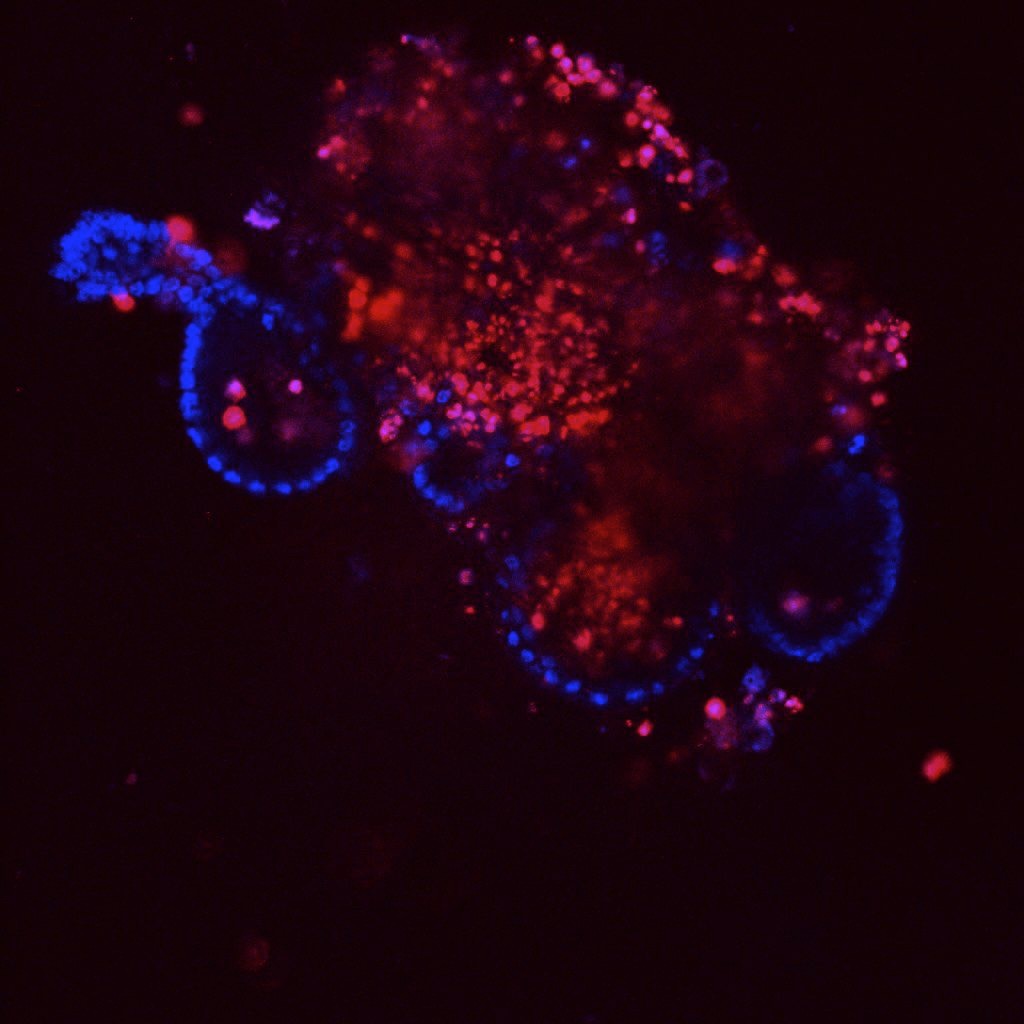Cell death and inflammation

Many pathogens invade and infect specific tissues and organs. Similarly, there are increased interactions between immune cells and pathogens in organs with mucosal surfaces and close contact to the outside world, such as the lung, skin and the intestine. The activation of immune cells by microorganisms and their products often leads to the development of protective immune responses with the aim to eliminate pathogens and provide long-lasting protection from reinfection. However, uncontrolled and chronic activation of immune cells can also lead to immunopathologies and associated damage of the affected tissues. A major focus of our division in this respect is the investigation of the molecular mechanisms and the impact of cell death processes during inflammatory diseases of the liver and the gut.
Selected publications:
Grabinger T, Bode K, Demgenski J, Seitz C, M. Delgado E, Kostadinova F, Reinhold C, Etemadi N, Wilhelm S, Schweinlin M, Hänggi K, Knop J, Hauck C, Walles H, Silke J, Wajant H, Nachbur U, Wong W-L, Brunner T. Inhibitor of Apoptosis Protein-1 Regulates Tumor Necrosis Factor-mediated Destruction of Intestinal Epithelial Cells. Gastroenterology, 152:867-879. 2017
Grabinger T, Luks L, Kostadinova F, Zimberlin C, Medema JP, Leist M and Brunner T. Ex vivo culture of intestinal crypt organoids as a model system for assessing cell death induction in intestinal epithelial cells and enteropathy. Cell Death Dis, 5:e1228. 2014
Corazza, N., Jakob, S, Schaer, C., Frese, S, Keogh, A., Stroka, D., Mueller, C., Schneider, P., and Brunner, T. TRAIL receptor-mediated JNK activation and Bim phosphorylation critically regulate Fas-mediated liver damage and lethality. J Clin Invest, 116:2493-9. 2006
